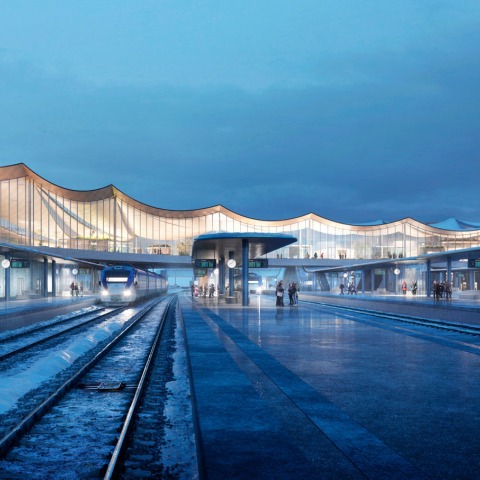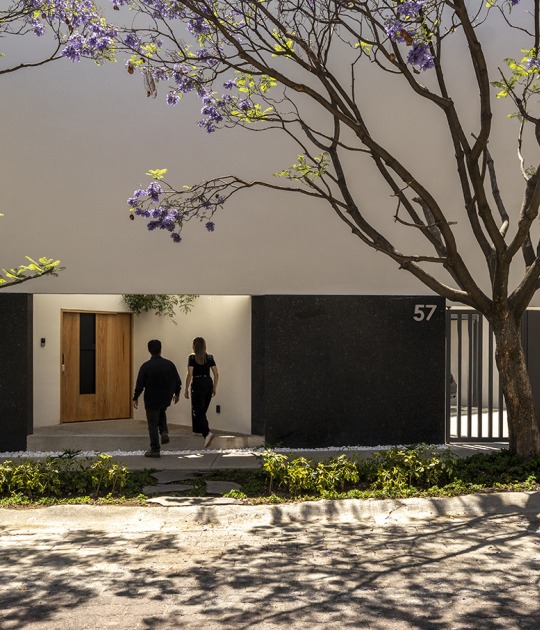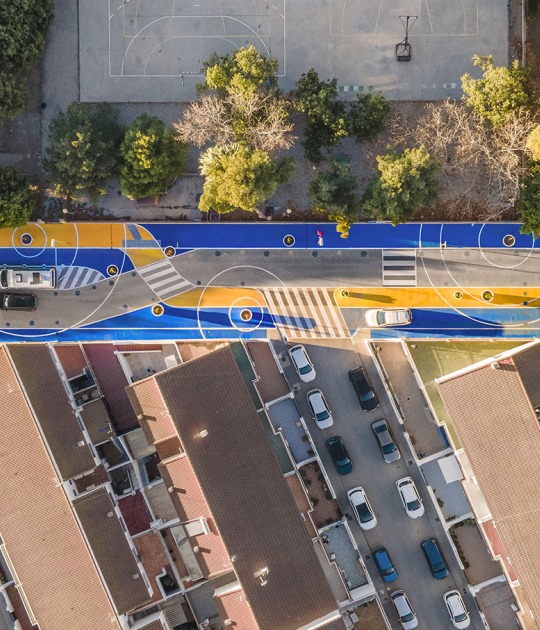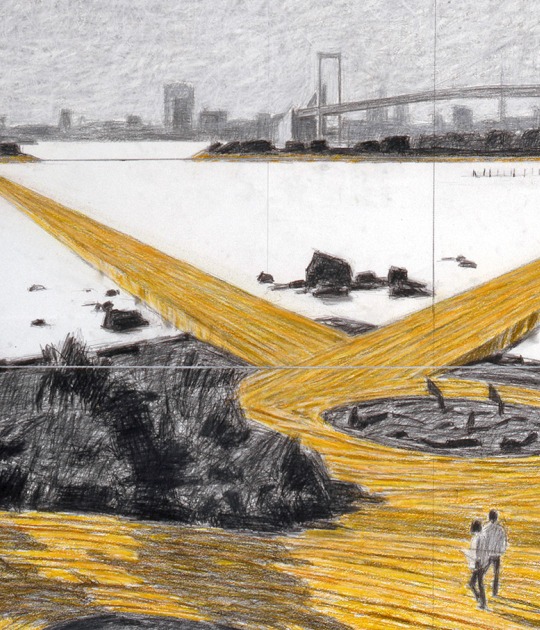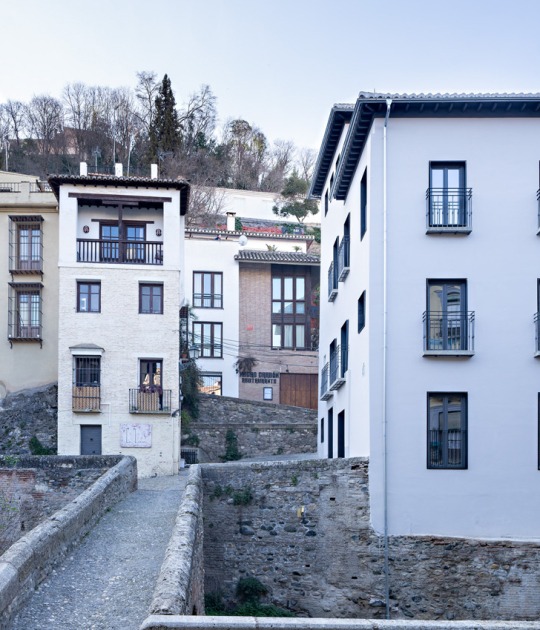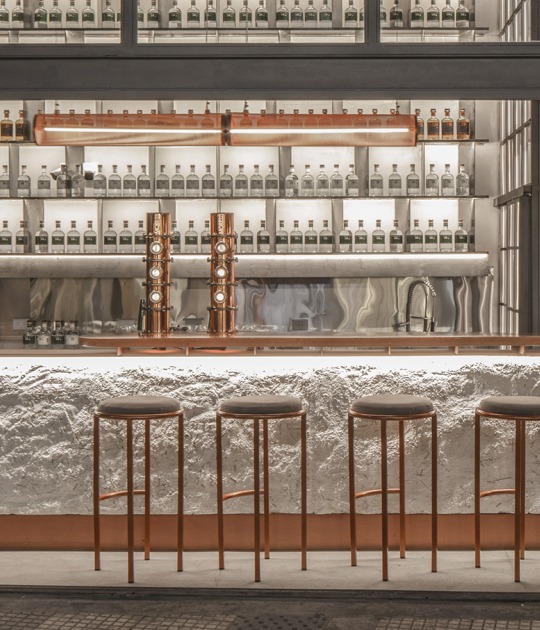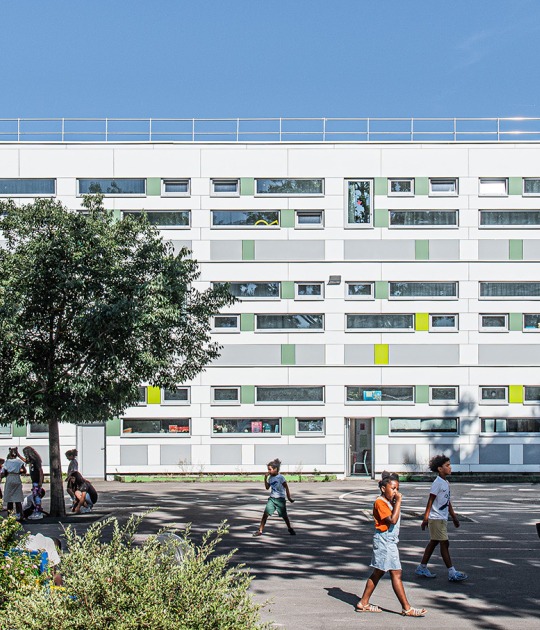The roof is created in the shape of a handkerchief held by its corners so that the peaks that are created mark the entrances to the exchanger. In addition, the ceiling is torn with a zigzagging movement that helps the entry of light to the interior spaces, as well as its natural ventilation.
Sustainability is an important pillar within the project decisions so that the conditions for public transport are improved, studying its routes and making them compatible with those of bicycles. On the other hand, solar cells are integrated on the roof to cover 70% of the complex's energy demand, as well as a system for collecting and reusing rainwater.
Description of project by BIG
Västerås Travel Center is a new infrastructural hub in the heart of one of Sweden’s largest cities. Behaving like a dynamic urban node and visual landmark, the Travel Center will connect the neighborhoods of Västerås and the city’s flows and create a new public destination in the city center.
Västerås Travel Center will physically connect to the existing city structure and become a crucial link over the railroad, unite transportation functions, and welcome all visitors with one clear identity. The final design has now been revealed to the public and construction is slated to begin in 2022 and is expected to be finalized in 2025.
“Västerås' new Travel Center brings the entire city's infrastructural hub together on one landscape, under one roof. The travel center is designed as a piece of social infrastructure, shaped for the flow of people and public life. We wanted to celebrate movement and create a welcoming, warm and transparent mobility hub that becomes an important social and economic node redefining the city’s infrastructure and landscape”.
Bjarke Ingels, Founder & Creative Director at BIG – Bjarke Ingels Group.
The raised corners of the Travel Center clearly mark the most important entries in relationship to the city's flows. The roof answers dilemmas caused by the city’s ongoing development by connecting the transportation hub’s complex programs in a clearly readable unit.
Placing the lowest point of the roof towards the middle over the center points of the bridges, the roof follows the Travel Center's program, and does not encroach on any commercial surfaces. The roof shape meets the sweeping gestures of the ramps in low nodes over the track area, and a dramatic pull is created between the city center and Lake Mälaren.
Terraces surrounding the Travel Center create natural connections to Vasaparken and Hamnparken, and meeting places that act as extensions of the city’s rooms, floors, parks, and streets. Visitors and locals can enjoy lookout points, meeting places, hang out spots, playful edges for skating, resting in the sun, WiFi zones, and seating to observe the city.
The boundary between inside and outside is blurred by the building's glazed and long curved facades, ensuring light and openness at the building’s edges, while active facades increase the feeling of security. Biophilic spaces carry the landscape indoors, where travelers can move under a protective roof with platform connections down to the trains.
To let light in and circulate air, the ceiling has been sliced with a zigzag line, from one side to the other. This load-bearing design element extends the roof between the perimeter of the façade, creating an indoor landscape free of pillars for commercial programs to be designed without obstacles.
Along with the bus terminal and integrated platform area in Resecentrum is a bright, modern bicycle garage, travel services, commercial areas, restaurants, offices, event areas, and exhibition spaces. The resort's facilities also include outdoor bicycle parking, taxi zones, areas for boarding and disembarking, as well as short-term parking. The new bus square will double the size of the current bus terminal, and have 37 stops for buses in public transport. The commercial bus traffic will be moved to the south side of the tracks.
“We have designed the defining feature of Västerås Travel Center, the floating roof, as a rolling, light stratus cloud that shelters the travelers and landscape. Continuous in plan but changing in section, the roof opens the Travel Center to both the city side and the harbor side at the same time as it gathers around the traveler, serving to protect, collect and invite visitors. Västerås travel center is designed based on flow. Flow for public transportation and for the traveler, but also for the as shortcuts for the citizens of Vesterås. The travel center connects the city side with Mälarporten and Mälaren by lifting the city floor over the railway tracks. Vasaparken's green urban space is expanded and leads pedestrian and bicycle lanes up and over the tracks and connects the center with Hamnparken and Mälaren”.
David Zahle, Architect and Partner at BIG - Bjarke Ingels Group.
The landscape unites across the railway and is shaped by flow. The fast flow that takes the traveler directly to their destination, the slow flow that takes the visitor on a journey of discovery and a coffee break, the bicycle flow that swings slightly in the landscape, and a winding flow that provides accessibility for everyone. On top of this landscape an environment of commercial surfaces with street furniture and protected zones gives an organic and soft expression. Residents will be able to cross the railroad tracks and travel between the districts all year round and around the clock via the separated pedestrian and bicycle passage. Ground heating and lighting will be available for cold and dark periods.
The design of the new Travel Center will work with the building's integrated solar cell system on the vast roof surface to harvest the sun's energy, with the capability of covering nearly 70% of the project’s energy demand. The indoor climate will be managed through natural ventilation, and heating through underfloor heating, and the potential use of floor cooling and rainwater recycling. Conditions will be improved for public transport in the city, providing a natural flow for bicycles and pedestrians, as well as passengers switching between modes of transport. These benefits along with charging stations and places for micro-mobility will reduce citizen’s reliance on cars.
Västerås Travel Center has taken shape and developed over time to ensure the best possible solutions in function, program, sustainability, and future security. The new building is part of the detailed plan for a new Travel Center that is expected to be completed by the autumn of 2021, when it is planned to go up for review. Once the detailed plan is adopted, Västerås Travel Center can begin construction.
